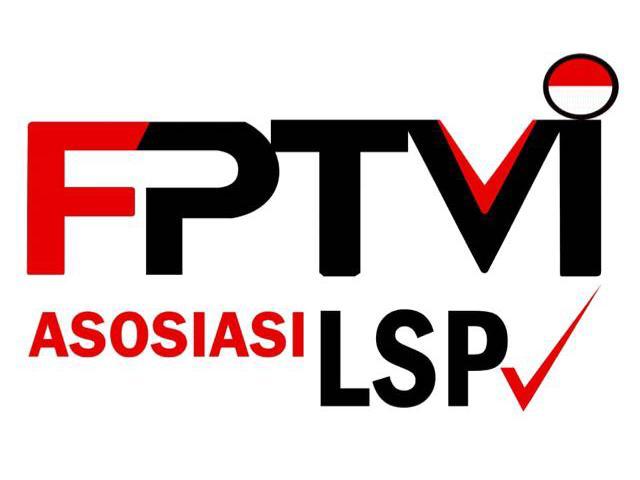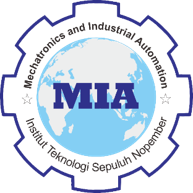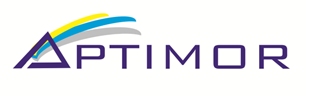Application of Electrocoagulation in Stabilizing pH and Removing Pollutants from Domestic and Urban Wastewater Using Aluminum Electrodes
Abstract
Keywords
Full Text:
PDFReferences
E. Wiyanto, B. Harsono, A. Makmur, R. Pangputra, J. Julita, and M. S. Kurniawan, “Penerapan Elektrokoagulasi Dalam Proses Penjernihan Limbah Cair,” Jetri J. Ilm. Tek. Elektro, vol. 12, pp. 19–36, 2017, doi: 10.25105/jetri.v12i1.1449.
M. Ammar, E. Yousef, M. A. Mahmoud, S. Ashraf, and J. Baltrusaitis, “A Comprehensive Review of the Developments in Electrocoagulation for the Removal of Contaminants from Wastewater,” Separations, vol. 10, no. 6, 2023, doi: 10.3390/separations10060337.
T. Jovanović et al., “Mechanism of the electrocoagulation process and its application for treatment of wastewater: A review,” Adv. Technol., vol. 10, no. 1, pp. 63–72, 2021, doi: 10.5937/savteh2101063j.
M. Anugrah, “The Effect of Voltage Variation, Plate Area and Electrocoagulation Time on TSS Reduction of Laundry Wastewater Using Aluminum Electrode,” CHEMVIRO J. Kim. dan Ilmu Lingkung., vol. 2, no. 1, pp. 113–122, 2024.
Rakhmania et al., “Recent Applications of the Electrocoagulation Process on Agro-Based Industrial Wastewater: A Review,” Sustain., vol. 14, no. 4, pp. 1–19, 2022, doi: 10.3390/su14041985.
Z. Guo, Y. Zhang, H. Jia, J. Guo, X. Meng, and J. Wang, “Electrochemical methods for landfill leachate treatment: A review on electrocoagulation and electrooxidation,” Sci. Total Environ., vol. 806, p. 150529, 2022, doi: 10.1016/j.scitotenv.2021.150529.
H. Muvel, M. K. Jindal, P. K. Tewari, and V. Anand, “Advancements in electrocoagulation for oily wastewater treatment: Mechanisms, efficiency, and applications,” J. Water Process Eng., vol. 68, no. August, p. 106291, 2024, doi: 10.1016/j.jwpe.2024.106291.
S. Soeprijanto, D. F. Nury, and L. Pudjiastuti, “Treatment of Oily Wastewaters from Tanjung Perak Port by Electrocoagulation Using Aluminum Electrodes,” IOP Conf. Ser. Mater. Sci. Eng., vol. 543, no. 1, 2019, doi: 10.1088/1757-899X/543/1/012098.
S. Boinpally, A. Kolla, J. Kainthola, R. Kodali, and J. Vemuri, “A state-of-the-art review of the electrocoagulation technology for wastewater treatment,” Water Cycle, vol. 4, no. June 2022, pp. 26–36, 2023, doi: 10.1016/j.watcyc.2023.01.001.
W. T. Mohammed and F. Y. Al Jaberi, “Effecting of pH parameter on simulated wastewater treatment using electrocoagulation method,” Eng. J., vol. 24, no. 4, pp. 73–88, 2018, doi: 10.31026/J.ENG.2018.04.05.
R. Garmini and Z. Zairinayati, “Penurunan Kadar Fosfat Limbah Cair Usaha Laundry Dengan Karbon Aktif Sekam Padi,” J. Delima Harapan, vol. 9, no. 1, pp. 71–76, 2022, doi: 10.31935/delima.v9i1.152.
M. Ebba, P. Asaithambi, and E. Alemayehu, “Investigation on operating parameters and cost using an electrocoagulation process for wastewater treatment,” Appl. Water Sci., vol. 11, no. 11, pp. 1–9, 2021, doi: 10.1007/s13201-021-01517-y.
N. Boudjema, D. Ben Salem, E. Lobna, O. Abdelkader, and N. Mameri, “Treatment of contaminated river water by batch electrocoagulation system using aluminium and iron electrodes: Performance of process and statistical analysis,” Water. Air. Soil Pollut., vol. 235, no. 10, pp. 1–14, 2024, doi: 10.1007/s11270-024-07495-6.
A. Morales-Figueroa, E. A. Teutli-Sequeira, I. Linares-Hernández, V. Martínez-Miranda, M. A. García-Morales, and G. Roa-Morales, “Optimization of the Electrocoagulation Process with Aluminum Electrodes for Rainwater Treatment,” Front. Environ. Sci., vol. 10, no. July, pp. 1–12, 2022, doi: 10.3389/fenvs.2022.860011.
A. Takwanto, A. Mustain, and H. P. Sudarminto, “Penurunan Kandungan Polutan pada Lindi dengan Metode Elektrokoagulasi-Adsorbsi Karbon Aktif,” J. Tek. Kim. dan Lingkung., vol. 2, no. 1, pp. 11–16, 2018, doi: 10.33795/jtkl.v2i1.37.
S. A. Bakry, M. E. Matta, and K. Zaher, “Electrocoagulation process performance in removal of TOC, TDS, and turbidity from surface water,” Desalin. Water Treat., vol. 129, pp. 127–138, 2018, doi: 10.5004/dwt.2018.23070.
M. Sadar, “Turbidity Measurement : A Simple , Effective Indicator of Water Quality Change,” Aqualab Sci., pp. 1–5, 2017.
A. Ngatin et al., “Pengaruh Laju Alir Terhadap Penurunan Pengotor Limbah Laundry Metode Elektrokoagulasi Kontinyu Berpengaduk,” Fluida, vol. 15, no. 2, pp. 89–96, 2022, doi: 10.35313/fluida.v15i2.4040.
R. Lamhar et al., “Foam investigation and optimization by response surface methodology of electrocoagulation process for textile wastewater decolorization in single-channel reactor,” Chem. Eng. Res. Des., vol. 213, no. November 2024, pp. 52–65, 2025, doi: 10.1016/j.cherd.2024.11.019.
C. Zhou, H. Y. Zhang, J. W. Chen, X. L. Liu, R. Wang, and W. Y. Tan, “Variations in heavy metals and turbidity in wastewater from wet flue gas desulfurization by electrocoagulation,” Desalin. Water Treat., vol. 141, pp. 82–88, 2019, doi: 10.5004/dwt.2019.23464.
M. K. N. Mahmad, M. A. Z. M. R. Rozainy, I. Abustan, and N.
Baharun, “Electrocoagulation Process by Using Aluminium and Stainless Steel Electrodes to Treat Total Chromium, Colour and Turbidity,” Procedia Chem., vol. 19, pp. 681–686, 2016, doi: 10.1016/j.proche.2016.03.070.
R. Ardiansyah, T. M. Putra, D. R. Suminar, and A. Ngatin, “Pengaruh Waktu Proses pada Desalinasi Air Laut dengan Metode Elektrokoagulasi secara Batch,” Fluida, vol. 14, no. 2, pp. 65–72, 2021, doi: 10.35313/fluida.v14i2.2828.
E. Issaka, “From complex molecules to harmless byproducts: Electrocoagulation process for water contaminants degradation,” Desalin. Water Treat., vol. 319, no. June, p. 100532, 2024, doi: 10.1016/j.dwt.2024.100532.
M. Ebba, P. Asaithambi, and E. Alemayehu, “Development of electrocoagulation process for wastewater treatment: optimization by response surface methodology,” Heliyon, vol. 8, no. 5, p. e09383, 2022, doi: 10.1016/j.heliyon.2022.e09383.
N. Idusuyi, M. A. Adebayo, C. A. Igwegbe, O. T. Aghogho, A. James, and R. A. Kazeem, “A sustainable approach to dairy wastewater treatment through electrocoagulation: From beverage cans to clean water,” Waste Manag. Bull., vol. 3, no. 1, pp. 96–106, 2025, doi: 10.1016/j.wmb.2024.12.012.
S. N. A. Jalil, N. Amri, A. A. Ajien, N. F. Ismail, and B. Ballinger, “A hybrid electrocoagulation-adsorption process for fluoride removal from semiconductor wastewater,” J. Phys. Conf. Ser., vol. 1349, no. 1, 2019, doi: 10.1088/1742-6596/1349/1/012056.
E. Fikri, I. A. Sulistiawan, A. Riyanto, and A. E. Saputra, “Neutralization of Acidity (pH) and Reduction of Total Suspended Solids (TSS) by Solar-Powered Electrocoagulation System,” Civ. Eng. J., vol. 9, no. 5, pp. 1160–1172, 2023, doi: 10.28991/CEJ-2023-09-05-09.
E. Saputra and F. Hanum, “Elektrokoagulasi Terhadap
Pengolahan Effluent the Effect of Inter Electrode Distance on,” J. Tek. Kim. USU, vol. 5, no. 4, pp. 33–38, 2016.
A. Munandar, K. Nabila, and R. N. Azizah, “Chemical Oxygen Demand (COD) and Total Suspended Solid (TSS) Removal from Rubber Wastewater Factory Using Electrocoagulation Technique,” Indones. J. Environ. Manag. Sustain., vol. 7, no. 1, pp. 27–31, 2023, doi: 10.26554/ijems.2023.7.1.27-31.
N. I. Abdillah and M. Mirwan, “Kombinasi Koagulasi – Flokulasi dan Filtrasi Menggunakan Bahan Alami Pada Limbah Cair Laundry Untuk Menurunkan Parameter TSS dan Kekeruhan,” vol. IX, no. 4, pp. 11063–11077, 2024.
DOI: http://dx.doi.org/10.12962%2Fj23378557.v11i2.a22816
Refbacks
- There are currently no refbacks.
This work is licensed under a Creative Commons Attribution 4.0 International License. IPTEK The Journal of Engineering published by Pusat Publikasi Ilmiah, Institut Teknologi Sepuluh Nopember.
Please contact us for order or further information at: email: iptek.joe[at]gmail.com Fax/Telp: 031 5992945. Editorial Office Address: Pusat Riset Building 6th floor, ITS Campus, Sukolilo, Surabaya 60111, Indonesia.








